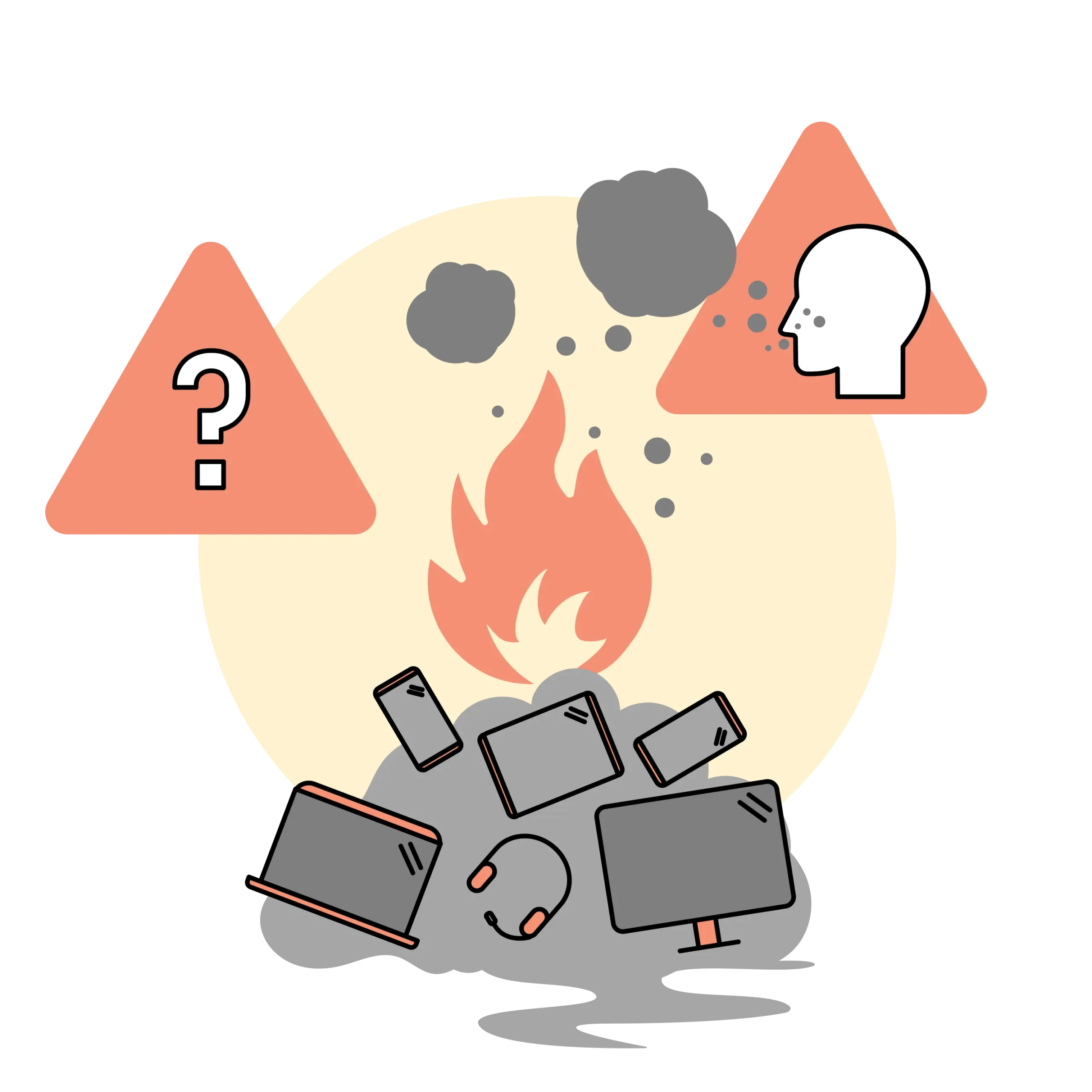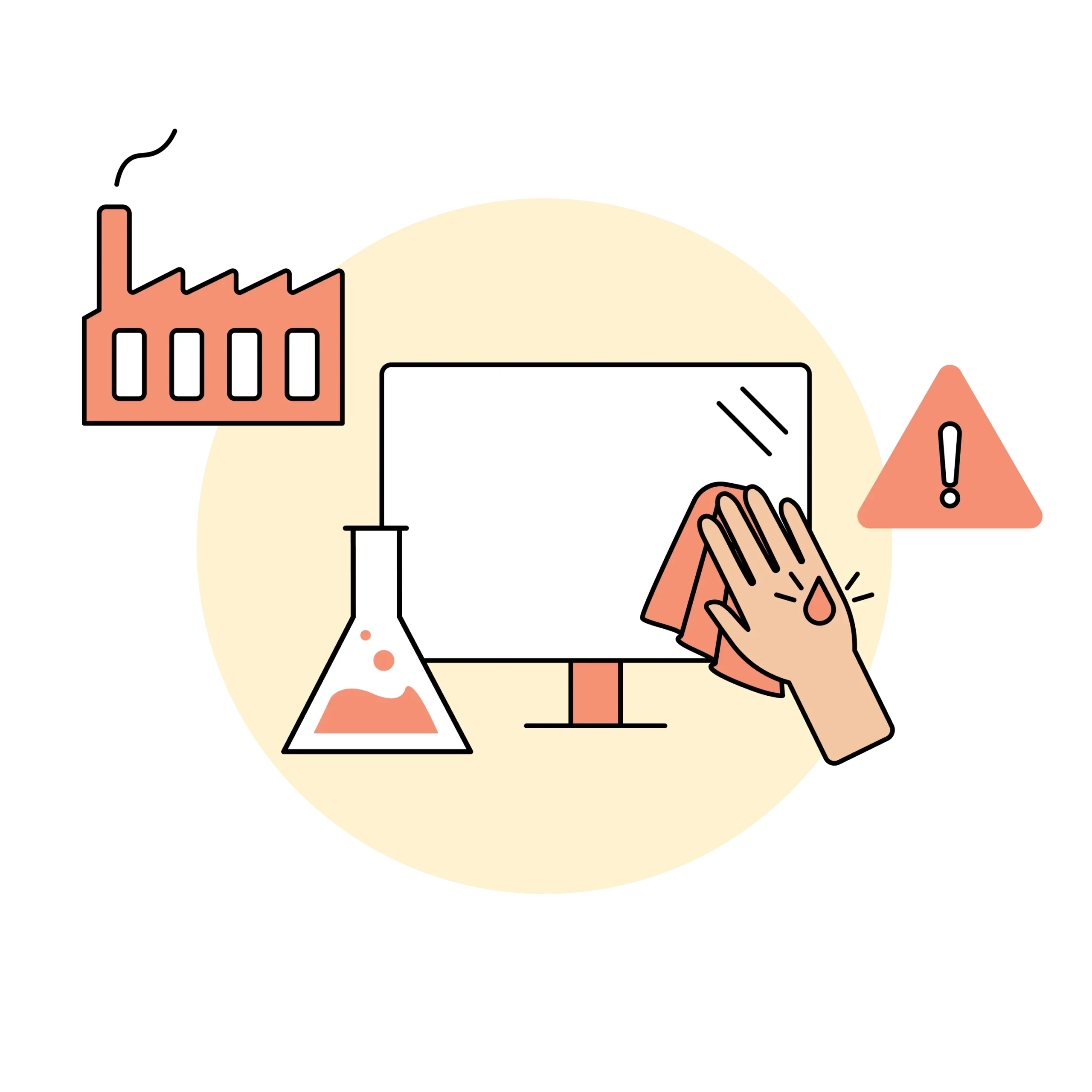Hazardous substances in IT products — and how to avoid them
Hazardous substances used in IT products present a wide variety of human health and environmental risks. Throughout the life cycle, products may release dioxins, halogens and other toxicants, which can persist in the natural environment and the human body.
Around 350,000 different types of manufactured chemicals are available on the global market today. This figure is projected to triple by 2050. Chemical pollutants can be found from the Arctic to Antarctica, and some are extremely persistent. In 2022, researchers said that the safe planetary boundary for pollutants, including plastics, had been exceeded. The main reason for this is that the annual production and emissions of new chemical substances far exceed society’s ability to assess risks and monitor them.
Most chemicals are unknown
While some hazardous substances have been phased out through legislation, too little is known about the substances being used to replace them. Regulatory developments lag far behind where progress needs to be. While the chemical industry is fast-moving, with large lobbying resources, regulating chemicals is a slow and complex process.
It’s clear that today’s chemical assessment procedures are not keeping up with the increasing number of chemicals available. Out of the around 350,000 chemicals that are available on the market, only about one percent have been studied for their impact on humans and the environment. Once a substance is found to be of high risk, restrictions are often regional and in countries where they are not yet banned, they can continue to be used.
Another big problem is unsafe substitutions. The approach where all substances are considered safe until proven to be a risk means that banned substances often are replaced with similar ones, that may pose the same or even greater risks.
Hazardous substances also hinder circular IT management. Contaminated materials cannot be responsibly recycled and reused in new products and risk being incinerated or discarded, adding to the enormous e-waste problem and the loss of valuable materials.

How chemicals are used in IT products
Hazardous substances are often used in the manufacturing process of IT products, and in the products themselves. This is problematic from both a human health and an environmental perspective. Workers may be exposed during manufacturing, and substances risk leaking out into the natural environment when products are incinerated, placed in landfills or recycled in an unsafe way.
Flame retardants and plasticizers
Two examples of potentially hazardous substances are flame retardants, included in IT products to meet flammability safety requirements and plasticizers, used to make plastics, especially cables, more durable and flexible. While these chemicals are solving one problem, they risk creating another: a human health and environmental impact that can disrupt the hormonal system and increase the risk for memory and attention disorders, obesity, fertility problems and cancer.
Flame retardants and plasticizers are often persistent and bioaccumulate in living organisms, which means that even small amounts can cause serious health problems in the long term. The risk of harmful DNA alterations is greatest for the developing cells in children that are exposed before birth when substances are transferred to their bodies through the umbilical cord and after birth through other routes such as breast milk and dust particles.
Process chemicals
Scientific research shows that workers who come into contact with chemical substances used in the manufacture of IT products are more likely to suffer from cancer, reproductive damage, birth defects and other serious illnesses. Industrial cleaning solvents such as benzene and n-hexane have well-documented toxic human health effects and have been restricted in some parts of the world. However, they are often used by the manufacturing industry in developing countries where legislation is weaker and workers are less protected. These chemicals need to be phased out of production and replaced by safer alternatives. Personal Protective Equipment (PPE), training and exposure monitoring should also be provided to workers who risk chemical exposure.

Heavy metals
Another group of hazardous substances found in IT products are heavy metals, for example, cadmium, mercury, lead and hexavalent chromium. They are used in plastics, paints and components such as screen backlights and circuit boards. These elements are considered systemic toxicants that are known to induce multiple organ damage, even at lower levels of exposure. They are also classified as human carcinogens by the U.S. Environmental Protection Agency, and the International Agency for Research on Cancer (IARC).
Only safer options are allowed
Hazardous substances criteria have been part of TCO Certified since 1995. At first, we used the same strategy as everyone else and focused on banning substances known to be hazardous. However, due to the large majority of unknown substances on the market, this approach proved to be inefficient. Instead, we decided to consider all non-assessed substances a high risk until they have been scientifically tested and approved as safer alternatives.
With TCO Certified, information about each substance is gathered, and this includes both public information and confidential information owned by the chemical manufacturer. An independent toxicologist then evaluates the substance’s potential impact on human health and the environment. If the substance is found to be a safer option, it is added to TCO Certified Accepted Substance List and can be used in certified products. The list is dynamic and can be updated based on new scientific findings.
